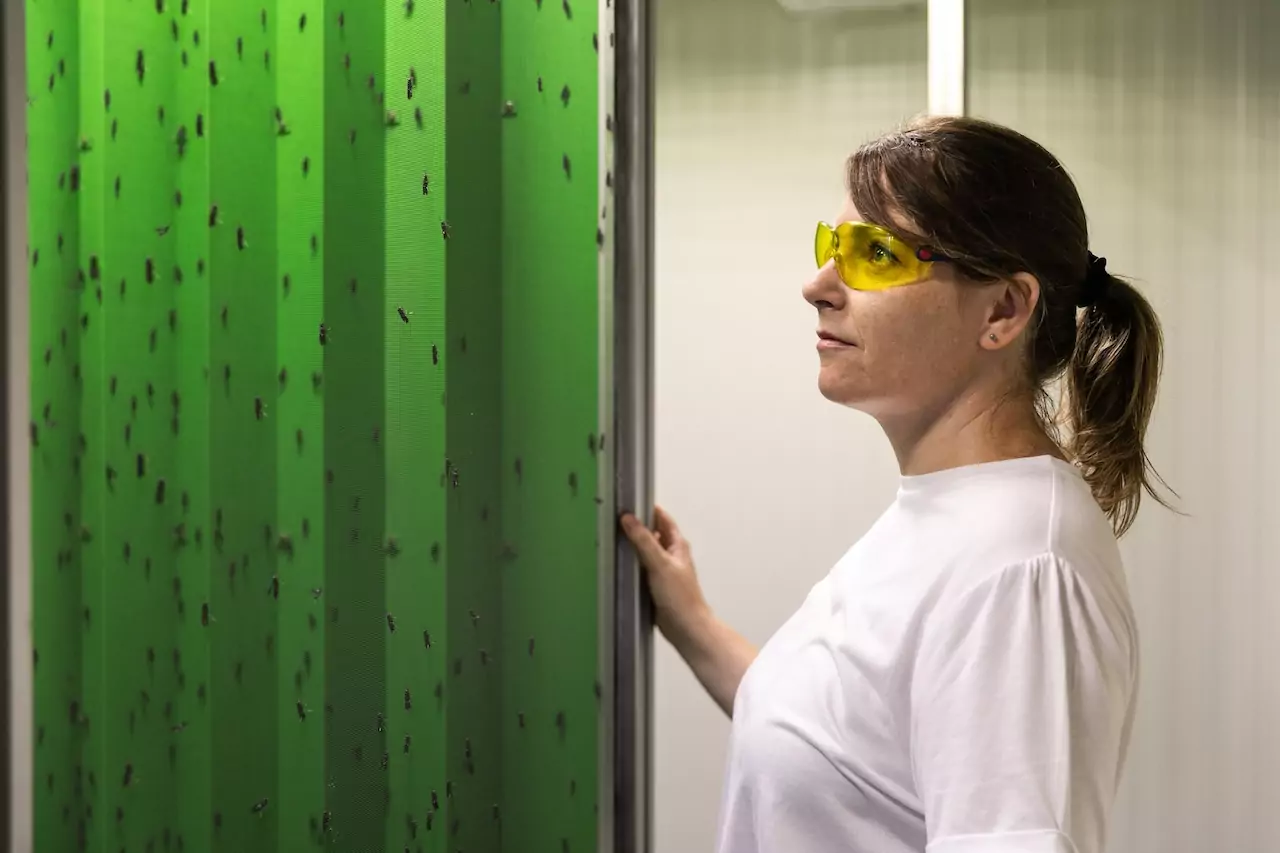In recent years, much has been said about insects as a possible solution to the challenges of the future, from alternative proteins to environmental sustainability. Yet, beyond the media hype, there is a real market that is growing exponentially in Europe and could increase its volumes tenfold in the next five years. To better understand this evolution, we asked Stefano Guerrieri, founder of the Italian start-up Kinsect, which ranks among the main players in this ‘second generation’ of companies, more focused on productivity, operating costs and industrial scale-up.
Exponential growth: in the next 5 years, +10x in Europe
‘The insect protein market is experiencing an acceleration and, at the same time, a rationalisation of the companies and technologies involved,’ Guerrieri explains. Whereas in the past the sector was mainly driven by curiosity and media hype, today we are witnessing a real industrial evolution. Projections show that European production of insect protein meal will rise from the current 100,000 tonnes per year to over 1.2 million tonnes by 2028, resulting in the need to build at least 200 new industrial plants.
Why insects?
The main target market is feed: from hypoallergenic pet food to aquaculture (trout, salmon, sea bass) to animal husbandry (laying chickens). Compared to traditional meal, insect meal offers advantages such as better digestion, reduction of disease and the possibility to partially replace declining protein sources such as overexploited fish stocks.

Complex technology: from biology to automation
But how do you go from an idea to an industrial plant capable of breeding insects on a large scale? Guerrieri points out that the real challenge lies in the integration of three disciplines:
- entomology, to fully understand the life cycles, biology and nutritional needs of insects;
- industrial automation, which is essential to manage processes where temperature, humidity and feed must be precisely controlled;
- software development, to analyse and optimise data, managing the continuous monitoring of colonies.
Complicating matters is the biological element: growth tests cannot be artificially accelerated, so any change of parameter or configuration can only be validated by waiting for the insect’s natural timing. As Guerrieri points out, this barrier to entry means that those who successfully overcome it gain a strong competitive advantage.
Current regulations and limits: bioconversion held back by law
Another crucial issue is the regulatory one. EU rules (Novel Food Regulation, Regulation 2017/893 and others) have opened the door to the use of insect products in various sectors, but there are still significant barriers. Today, in fact, insects are considered farm animals:
- can only be fed with by-products that comply with precise standards (EC Reg. 1069/2009);
- it is forbidden to use household waste or FORSU.
This restriction holds back the development of a circular economy model in which insects can bioconvert a wider range of organic waste. “If legislation evolved along these lines,” Guerrieri adds, “we could cut operating costs and expand the market even further, truly turning the insect industry into a key player in sustainable resource management.”
Focus and diversification: not only animal feed
Kinsect’s core business is undoubtedly animal nutrition, which today represents the largest and most receptive market for these products. However, the horizon is broader:
- human nutrition, still marginal (less than 10% of the market) due to cultural barriers, but with long-term growth prospects;
- chitin, extracted from the exoskeletons of larvae, can become a feed additive or the basis for products such as bioplastics and cosmetics;
- frass, the livestock residue (faeces and organic remains) is transformed into a nutrient-rich biological fertiliser that can be used as a soil conditioner and biostimulant in agriculture.
These lines of research make it possible to diversify revenues and improve the sustainability of the plants by integrating all the by-products of this innovative breeding.
The investment contribution: from prototype to industrial scale
Kinsect recently received a major investment from Farming Future and ToSeed to accelerate the transition from prototype to full-scale industrial production. Among the objectives:
- expanding the team and increasing the speed of development;
- the creation of strategic partnerships to establish an industrial nursery, capable of supplying a fattening and processing plant with a capacity of 1,000 tonnes/year of insect meal.
Furthermore, the company is preparing to participate in the Insect to Feed the World event, one of the world’s leading trade fairs in the sector, which will be held in Turin next year after the Singapore edition. It will be an opportunity to showcase Kinsect’s technology and unveil the first flagship plant.
A revolution already underway: sustainability and resilience
It is not just a green issue: 70% of the protein Europe needs is imported from abroad, 90% of fish stocks are overexploited and 77% of arable land is used for feed. All this makes insect protein a valuable asset for both food security and economic independence.
“Creating a local industrial supply chain also means job opportunities and development for the territories,” Guerrieri reiterates. “And while climate change and the need for more sustainable production models are driving this change, we are working to be a key player in it.
Conclusions
Talking to Stefano Guerrieri makes one realise that we are not dealing with a mere niche experiment, but with a sector that is laying the foundations to become a fundamental part of the agri-food future. Insect farming is not (just) a curiosity to browse on the web: it is a rapidly evolving market, aiming to close Europe’s protein gap, open up new models of circular economy and generate value also through innovative product lines (chitin, frass, cosmetics, etc.).
If regulations become more elastic and the ecosystem continues to innovate technologically, we may see a revolution faster than we imagine.
Note to reader: the author is CEO of Beeco and works with investment funds active in agritech, which may have supported or will support some of the startups mentioned in the future.
ALL RIGHTS RESERVED ©
